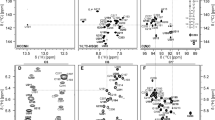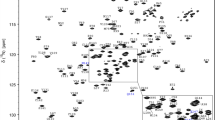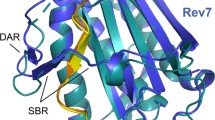Abstract
The HIV-1 viral protein R (Vpr) is incorporated into virus particle during budding suggesting that its presence in the mature virion is required in the early steps of the virus life cycle in newly infected cells. Vpr is released into the host cell cytoplasm to participate to the translocation of the preintegration complex (PIC) into the nucleus for integration of the viral DNA into the host genome. Actually, Vpr plays a key role in the activation of the transcription of the HIV-1 long terminal repeat (LTR), mediates cell cycle arrest in G2 to M transition, facilitates apoptosis and controls the fidelity of reverse transcription. Moreover, Vpr drives the repair enzyme uracil DNA glycosylase (UNG2) towards degradation. UNG2 has a major role in “Base excision repair” (BER) whose main function is to maintain genome integrity by controlling DNA uracilation. The interaction of Vpr with the cellular protein UNG2 is a key event in various stages of retroviral replication and its role remains to be defined. We have performed the structural study of UNG2 by NMR and we report its (1HN, 15N, 13Cα, 13Cβ and 13C′) chemical shift backbone assignment and its secondary structure in solution as predicted by TALOS-N. We aim to determine with accuracy by NMR, the residues of UNG2 interacting with Vpr, characterize their interaction and use the local structure of UNG2 and its interface with Vpr to propose potential ligands disturbing this interaction.



Similar content being viewed by others
References
Ahn J, Vu T, Novince Z, Guerrero-Santoro J, Rapic-Otrin V, Gronenborn AM (2010) HIV-1 Vpr loads uracil DNA glycosylase-2 onto DCAF1, a substrate recognition subunit of a cullin 4A-RING E3 ubiquitin ligase for proteasome-dependent degradation. J Biol Chem 285(48):37333–37341
Bax A, Ikura M (1991) An efficient 3D NMR technique for correlating the proton and15N backbone amide resonances with the α-carbon of the preceding residue in uniformly15N/13C enriched proteins. J Biomol NMR 1(1):99–104
Chauhan A, Tikoo A, Patel J, Abdullah AM (2014) HIV-1 endocytosis in astrocytes: a kiss of death or survival of the fittest. Neurosci Res 88:16–22
de Goede AL, Vulto AG, Osteraus AD, Gruters RA (2015) Understanding HIV infection for the design of a therapeutic vaccine. Part I : epidemiology and pathogenesis of HIV infection. Ann Pharm Fr 73(2):87–99
Descours B, Petitjean G, López-Zaragoza JL, Bruel T, Raffel R, Psomas C, Reynes J, Lacabaratz C, Levy Y, Schwartz O, Lelievre JD, Benkirane M (2017) CD32a is a marker of a CD4 T-cell HIV reservoir harbouring replication-competent proviruses. Nature 543(7646):564–567
Fenard D, Houzet L, Bernard E, Tupin A, Brun S, Mougel M, Devaux C, Chazal N, Briant L (2009) Uracil DNA glycosylase 2 negatively regulates HIV-1 L transcription. Nucleic Acids Res 37:6008–6018
Fritz JV, Briant L, Mély Y, Bouaziz S, de Rocquigny H (2010) HIV-1 viral protein R: from structure to function. Future Virol 5:607–625
Hagen L, Kavli B, Sousa MM, Torseth K, Liabakk NB, Sundheim O, Penă-Diaz J, Otterlei M, Hørning O, Jensen ON, Krokan HE, Slupphaug G (2008) Cell cycle-specific UNG2 phosphorylations regulate protein turnover, activity and association with RPA. EMBO J 27:51–61
Grzesiek S, Bax A (1993) Amino acid type determination in the sequential assignment procedure of uniformly 13C/15N-enriched proteins. J Biomol NMR 3(2):185–204
Kavli B, Sundheim O, Akbari M, Otterlei M, Nilsen H, Skorpen F, Aas PA, Hagen L, Krokan HE, Slupphaug G (2002) hUNG2 is the major repair enzyme for removal of uracil from U:A matches, U:G mismatches, and U in single-stranded DNA, with hSMUG1 as a broad specificity backup. J Biol Chem 277(42):39926–39936
Kay L, Clore G, Bax A, Gronenborn A (1990) Four-dimensional heteronuclear triple-resonance NMR spectroscopy of interleukin-1 beta in solution. Science 249(4967):411–414
Kim YJ, Wilson DM 3rd (2012) Overview of base excision repair biochemistry. Curr Mol Pharmacol 5(1):3–13
Kogan M, Rappaport J (2011) HIV-1 accessory protein Vpr: relevance in the pathogenesis of HIV and potential for therapeutic intervention. Retrovirology 8:1–25
Krokan HE, Drabløs F, Slupphaug G (2002) Uracil in DNA: occurrence, consequences and repair. Oncogene 21:8935–8948
Langevin C, Maidou-Peindara P, Aas PA, Jacquot G, Otterlei M, Slupphaug G, Benichou S (2009) Human immunodeficiency virus type 1 Vpr modulates cellular expression of UNG2 via a negative transcriptional effect. J Virol 83:10256–10263
Mansky LM, Preveral S, Selig L, Benarous R, Benichou S (2000) The interaction of vpr with uracil DNA glycosylase modulates the human immunodeficiency virus type 1 in vivo mutation rate. J Virol 74:7039–7047
Morellet N, Bouaziz S, Petitjean P, Roques BP (2003) Nmr structure of The HIV-1 regulatory protein Vpr. J Mol Biol 327(1):215–227
Mühle M, Lehmann M, Hoffmann K, Stern D, Kroniger T, Luttmann W, Denner J (2017) Antigenic and immunosuppressive properties of a trimeric recombinant transmembrane envelope protein gp41 of HIV-1. PLoS ONE 12(3):e0173454
Selig L, Benichou S, Rogel ME, Wu LI, Vodicka MA, Sire J, Benarous R, Emerman M (1997) Uracil DNA glycosylase specifically interacts with Vpr of both human immunodeficiency virus type 1 and simian immunodeficiency virus of sooty mangabeys, but binding does not correlate with cell cycle arrest. J Virol 71:4842–4846
Wen X, Casey Klockow L, Netkorchuk M, Sharifi HJ, de Noronha CMC (2012) The HIV1 protein Vpr acts to enhance constitutive DCAF1-dependent UNG2 turnover. Plos ONE 7:1 e30939
Yan N, Cherepanov P, Daigle JE, Engelman A, Lieberman J (2009) The SET complex acts as a barrier to autointegration of HIV-1. PLoS Pathog 5:1–13
Yan N, O’Day E, Wheeler LA, Engelman A, Lieberman J (2011) HIV DNA is heavily uracilated, which protects it from autointegration. Proc Natl Acad Sci USA 108:9244–9249
Acknowledgements
We would like to thank the TGIR-RMN program for the financial support. Thanks a lot to Dr. François-Xavier Canterelle at Lille University and to Dr. Nelly Morellet at ISCN institute at Gif-sur-Yvette for their help during the recording of the experiments and for their technical advices. We also thank Dr. Nathalie Chazal at UMR 9004 CNRS-Université Montpellier, for the UNG2 (93-313) Plasmid construction.
Author information
Authors and Affiliations
Corresponding author
Rights and permissions
About this article
Cite this article
Kara, H., Ponchon, L. & Bouaziz, S. Backbone resonance assignment of the human uracil DNA glycosylase-2. Biomol NMR Assign 12, 37–42 (2018). https://doi.org/10.1007/s12104-017-9776-1
Received:
Accepted:
Published:
Issue Date:
DOI: https://doi.org/10.1007/s12104-017-9776-1




